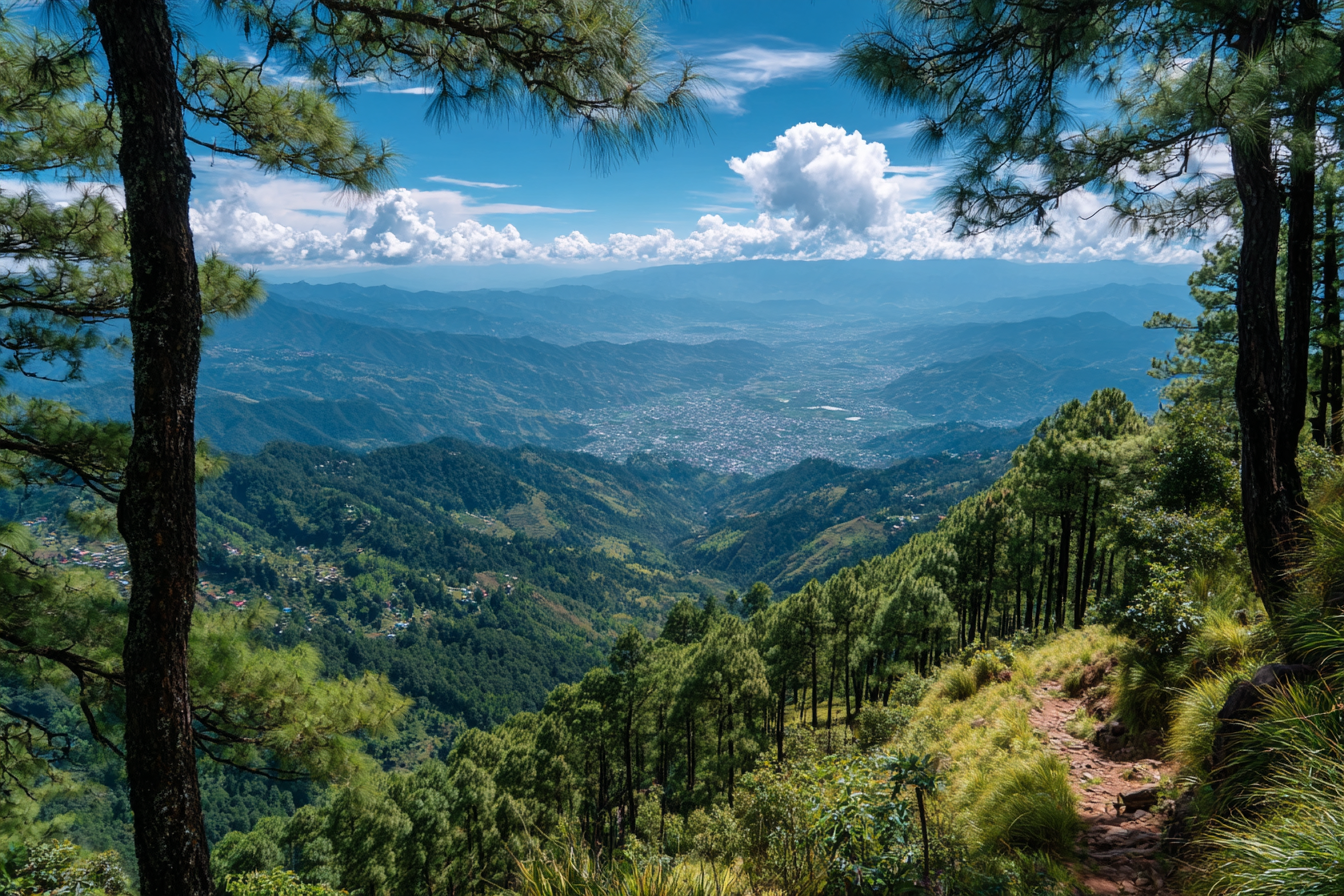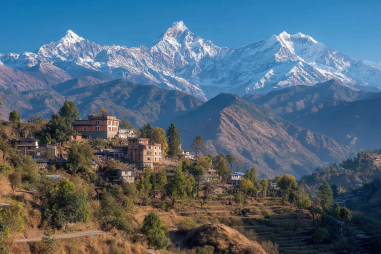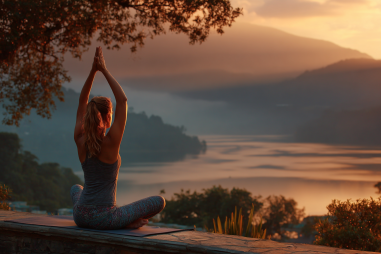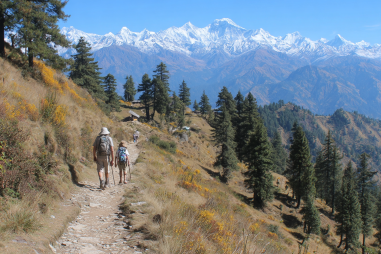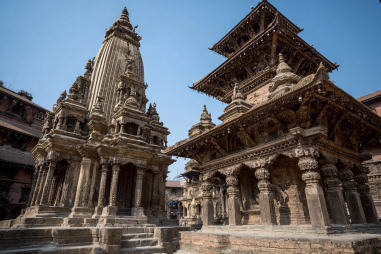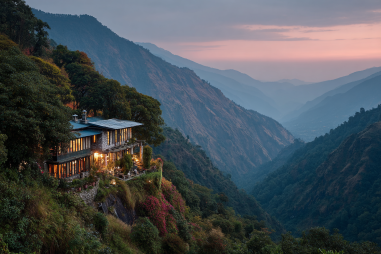Nestled in the lush hills just east of Kathmandu, Nagarkot is a favorite destination for nature lovers and adventure seekers alike. Famous for its panoramic views of the Himalayan range and serene countryside, Nagarkot offers an array of hiking trails that cater to all levels of trekkers. Whether you prefer a gentle walk through terraced fields or a more challenging climb to hilltop viewpoints, Nagarkot’s diverse trails showcase the best of Nepal’s natural beauty. In this guide, we’ll explore some of the top hiking routes, tips for preparation, and the best times to visit, helping you plan an unforgettable hiking adventure in this tranquil mountain retreat.
Hiking in Nagarkot: An Overview
Nagarkot is renowned primarily for its stunning sunrise and sunset views over the Himalayas, but beyond that, it is a hiking haven with trails that weave through forests, villages, and rolling hills. The region’s relatively moderate altitude (approximately 2,195 meters or 7,200 feet) makes it accessible for both beginners and seasoned hikers. The trails vary in length and difficulty, offering everything from easy strolls suited to families and casual walkers to longer, more strenuous routes for those craving an adventure.
Many of Nagarkot’s trails also provide a cultural experience since they pass through small Newari and Tamang villages, giving hikers an opportunity to observe traditional rural life. With well-marked paths and breathtaking landscapes, hiking here combines physical activity with exploration of Nepal’s rich natural and cultural heritage.
Popular Short Hikes and Their Difficulty Levels
For those new to hiking or on a tight schedule, Nagarkot offers several shorter routes that can be completed in a few hours. These hikes typically fall in the easy-to-moderate difficulty range and are ideal for families or those looking for a leisurely trek.
- Nagarkot to Changu Narayan (approx. 4-5 hours, moderate): This trail leads from Nagarkot through forested paths and terraced fields to the ancient Hindu temple of Changu Narayan. The elevation change is gentle, making it suitable for those with some hiking experience.
- Nagarkot Sunrise Viewpoint Hike (approx. 1-2 hours, easy): A quick, popular route for breathtaking sunrise views over the Himalayas. The path is accessible and great for all fitness levels.
- Junuwa Village Circuit (approx. 2-3 hours, easy to moderate): Explore local villages with a circular route starting and ending in Nagarkot.
For more experienced hikers looking for a challenge, longer routes offer steeper climbs and rugged terrain, perfect for testing endurance and rewarding trekkers with expansive views.
Trail Descriptions with Scenic Highlights
Nagarkot to Sankhu Village
One of the most scenic routes is the trail from Nagarkot down to the ancient town of Sankhu. This hike takes you along peaceful forest paths lined with rhododendron and pine trees, gardens bursting with local flora, and occasional temples along the way. As you descend, the views open up to lush valleys and distant terraced hills. Sankhu itself is a charming town with rich Newari culture, perfect for a peaceful stop before heading back.
Chisapani Loop
For a longer trek, the Chisapani Loop starting near Nagarkot is a great option. This loop trail, roughly 12-15 km, passes through dense forests and remote villages, crossing small streams and offering panoramic views of the Himalayan peaks including Langtang and Ganesh Himal. The fresh mountain air and the chance to see wildlife like colorful birds, butterflies, and occasional monkeys make this hike highly rewarding.
Nagarkot Ridge Trail
This trail moves along the ridge with fantastic views on both sides, perfect for photographers and nature enthusiasts. The path is moderately challenging due to some uphill sections but rewards trekkers with expansive vistas of snow-capped peaks at sunrise and sunset.
Tips for Hiking Safety and Preparation
Before setting out on any Nagarkot hiking trail, it’s essential to prioritize safety:
- Check the weather: Mountain weather can be unpredictable. Clear skies are ideal for Himalaya views.
- Inform someone: Let your hotel or a friend know your planned route and estimated return time.
- Stay on marked trails: To avoid getting lost and protect the environment, stick to designated paths.
- Pace yourself: Many trails involve elevation changes, so take breaks as needed.
- Hydrate and eat: Carry enough water and energy snacks.
- Watch for altitude effects: While Nagarkot is not extremely high, some hikers may feel slight altitude changes—stay alert to any discomfort.
What to Pack for Nagarkot Hikes
Proper gear can make a big difference between a comfortable hike and an arduous one. Here’s a suggested packing list for your trekking day:
- Lightweight hiking shoes or boots with good grip
- Layered clothing to adjust to temperature changes—t-shirts, fleece, waterproof jacket
- Hat and sunglasses to protect from the sun
- Backpack with water (at least 1.5 liters per person)
- Energy snacks like nuts, fruits, or trail mix
- Camera or smartphone for photos
- Map of trails or GPS device
- First aid kit including blister pads
- Sunscreen and insect repellent
Guided vs. Self-Guided Hiking Options
When trekking in Nagarkot, you can choose between self-guided exploration or hiring a local guide. Both options have their benefits:
- Self-guided hikes allow flexibility in pace and route. If you enjoy independence and have some trekking experience, this might be your preferred choice. However, ensure you have a reliable map and understand the trail markings.
- Guided hikes offer added safety, local insights, and cultural knowledge. A guide can help navigate lesser-known paths, share stories about the villages and nature, and assist in case of emergencies. This is an excellent choice for first-time visitors or anyone unfamiliar with the area.
Wildlife and Nature Spotting Opportunities
Nagarkot’s natural environment is home to diverse flora and fauna, making hiking a delight for nature observers. Birdwatchers can spot species such as the colorful Himalayan monal, various bulbuls, and woodpeckers. The forests also shelter small mammals like squirrels and occasionally wild boar. The rhododendron forest bursts into vibrant colors in spring, while autumn offers crisp air and clear mountain vistas. Besides animals and plants, the region’s natural springs and terraced farmlands add charm to every hike.
Seasonal Considerations for Hiking
The best times to hike in Nagarkot are during the pre-monsoon (spring) and post-monsoon (autumn) seasons:
- Spring (March to May): The rhododendrons bloom spectacularly, and temperatures are mild. However, occasional rain showers can occur.
- Autumn (September to November): Clear skies and stable weather provide the most reliable mountain views. This is peak trekking season in Nepal.
- Winter (December to February): Cold temperatures and early sunsets may limit longer hikes, but on clear days the views can be breathtaking.
- Monsoon (June to August): Trails become slippery and prone to landslides, so this season is generally not recommended for hiking.
Choosing the right season ensures you experience Nagarkot in its best light and avoid weather-related difficulties.
Embarking on Your Nagarkot Hiking Adventure
Whether you are a casual walker eager to witness serene mountain vistas or an enthusiastic trekker seeking challenging routes, Nagarkot offers a variety of hiking trails that blend natural beauty and cultural immersion. Proper preparation, awareness of trail conditions, and respect for the environment will enhance your experience. With stunning panoramas, peaceful forests, and welcoming villages along the way, hiking in Nagarkot promises memories that will last a lifetime. Plan your trip well, and get ready to explore one of Nepal’s most picturesque hiking destinations.

